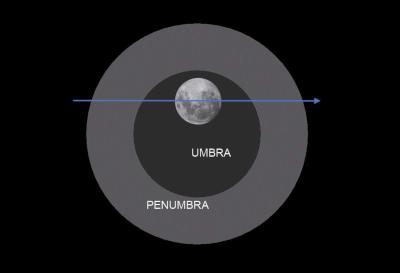Total Eclipse of the Moon
MEDIA RELEASE
28th November 2011
Total Lunar
Eclipse on Sunday 11th December
Total Eclipse of the Moon
New Zealanders will get a rare opportunity to observe a total lunar eclipse in their skies in the very early morning of Sunday the 11th of December.

The eclipse will begin just after 12:30am and be visible from all of New Zealand, where the skies are clear. The period of total eclipse lasts for less than an hour, from just after 3am to just before 4am.
Observatories around the country will be hosting special events to allow the public to observe this phenomenon through powerful telescopes. In Auckland a large crowd is expected to gather at Stardome Observatory & Planetarium where the public are invited to participate in viewing the event between 12am and 6am for a gold coin donation.
In a lunar eclipse the Moon is obscured as it passes through the Earth’s shadow. There are actually two shadows, called the umbra and the penumbra. The umbra is a smaller circle of dark shadow caused by the Earth blocking all the light from the Sun to the Moon. Only a partial eclipse can be seen when the Moon is in the penumbra.
• 12:33am – First
contact with penumbra (part shadow begins to creep across
the Moon)
• 1:46am – First contact with umbra (full
shadow begins to cross the Moon)
• 3:06am – Total
eclipse starts (Moon in full dark shadow)
• 3:32am –
Mid-Eclipse
• 3:57am – Total eclipse ends (lighter
penumbral shadow only is across the Moon)
• 5:18am –
Final contact with umbra (full light begins to cross the
Moon again)
• 5:30am – Moon sets in NZ at this
time
Stardome Astronomy Educator David Britten says, “The eclipsed Moon is likely to appear copper coloured to us. This is caused by a scattering of sunlight as it passes through the thin ring of the Earth’s atmosphere, removing the blue light and passing mainly the red, some of which weakly illuminates the Moon. You will need a clear eastern horizon to be able to see this eclipse. Over water would be ideal, and the further north you are located the better.”
The last lunar eclipse able to be observed in New Zealand was a total lunar eclipse in June of this year, but New Zealanders were only able to watch the first half of the eclipse before the Moon set for us. There are no total lunar eclipses in 2012. However, New Zealand is privy to prime viewing of two major celestial events next year: the transit of Venus across the face of the Sun on 6 June, and a solar eclipse on 14 November.
This eclipse of the Moon on 11 December will be visible to the naked eye, but astronomical societies around the country will be hosting viewings and the public are encouraged to take part in these.
For more information about the eclipse visit www.stardome.org.nz.
- ENDS –


 John Mazenier: Gaffer Tape And Glue Delivering New Zealand’s Mission Critical Services
John Mazenier: Gaffer Tape And Glue Delivering New Zealand’s Mission Critical Services Earthquake Commission: Ivan Skinner Award Winner Inspired By Real-life Earthquake Experience
Earthquake Commission: Ivan Skinner Award Winner Inspired By Real-life Earthquake Experience Reserve Bank: Consultation Opens On A Digital Currency For New Zealand
Reserve Bank: Consultation Opens On A Digital Currency For New Zealand NIWA: Ship Anchors May Cause Extensive And Long-lasting Damage To The Seafloor, According To New Research
NIWA: Ship Anchors May Cause Extensive And Long-lasting Damage To The Seafloor, According To New Research New Zealand Customs Service: A Step Forward For Simpler Trade Between New Zealand And Singapore
New Zealand Customs Service: A Step Forward For Simpler Trade Between New Zealand And Singapore Horizon Research: 68% Say Make Banks Offer Fraud Protection
Horizon Research: 68% Say Make Banks Offer Fraud Protection



